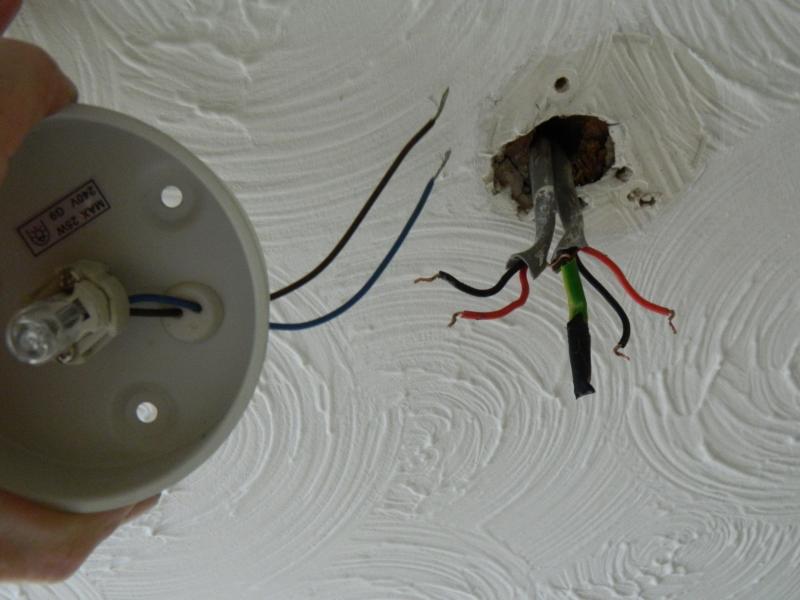I expect to be shot down in flames for not having enough electrical experience to be tackling this o.k. Which is why I stopped what I was doing..and the associated fuse remains pulled .
Earlier in the day I had replaced a standard bulb for a halogen in the upstairs bathroom. I checked the ceiling rose and could see that one of the black wires had a small red sleeve that I knew (from way back) was the switch live. And the job was made easy by simply using the same black wires (including switched live) that linked the rose to the old bulb.
In hindsight I was lucky this set up made the job easier... and having replaced the fuse - on the light came. (however is it safe ? Well, I have not left any bare wires, rerouted any other wires or needed to use any blocks and the earths were previously taken care of though I put more insulating tape on). I was also able to use the existing holes in the ceiling/joist to accomodate the new screws/fitting.
I then moved downstairs to do the same job on the old light in the bathroom. As before.. isolated fuse, removed bulb, unscrewed the piece to reveal the rose and then noted where the 2 black wires left the rose for the bulb.
I did not think to a)make a note which wire went to which part of the rose and b) whether there was a switched live. (and this is now confusing me more because I assumed there would be a black wire with a red sleeve on). I did insulate both earths together because the instructions with the halogen told me that the earth was not needed due to double insulation of the product.
Only when I replaced the bulb for the halogen, connected the 2 black wires as before, replaced fuse and switched on (with no result) - did I realise I was acting pretty naievely... And that is where I stopped and the fuse remains pulled as I said.
Here is the current situation.... (note I have since removed the connector from the bulb wires for now)
What am I missing here or should I just put my hands up and say.. thats as far as I'm going - get a sparkie.
I think I have answered my own question. However I would still welcome a experts opinion on what wire goes to where and why.
A great forum here
Many thanks for your patience
John
Earlier in the day I had replaced a standard bulb for a halogen in the upstairs bathroom. I checked the ceiling rose and could see that one of the black wires had a small red sleeve that I knew (from way back) was the switch live. And the job was made easy by simply using the same black wires (including switched live) that linked the rose to the old bulb.
In hindsight I was lucky this set up made the job easier... and having replaced the fuse - on the light came. (however is it safe ? Well, I have not left any bare wires, rerouted any other wires or needed to use any blocks and the earths were previously taken care of though I put more insulating tape on). I was also able to use the existing holes in the ceiling/joist to accomodate the new screws/fitting.
I then moved downstairs to do the same job on the old light in the bathroom. As before.. isolated fuse, removed bulb, unscrewed the piece to reveal the rose and then noted where the 2 black wires left the rose for the bulb.
I did not think to a)make a note which wire went to which part of the rose and b) whether there was a switched live. (and this is now confusing me more because I assumed there would be a black wire with a red sleeve on). I did insulate both earths together because the instructions with the halogen told me that the earth was not needed due to double insulation of the product.
Only when I replaced the bulb for the halogen, connected the 2 black wires as before, replaced fuse and switched on (with no result) - did I realise I was acting pretty naievely... And that is where I stopped and the fuse remains pulled as I said.
Here is the current situation.... (note I have since removed the connector from the bulb wires for now)
What am I missing here or should I just put my hands up and say.. thats as far as I'm going - get a sparkie.
I think I have answered my own question. However I would still welcome a experts opinion on what wire goes to where and why.
A great forum here
Many thanks for your patience
John



